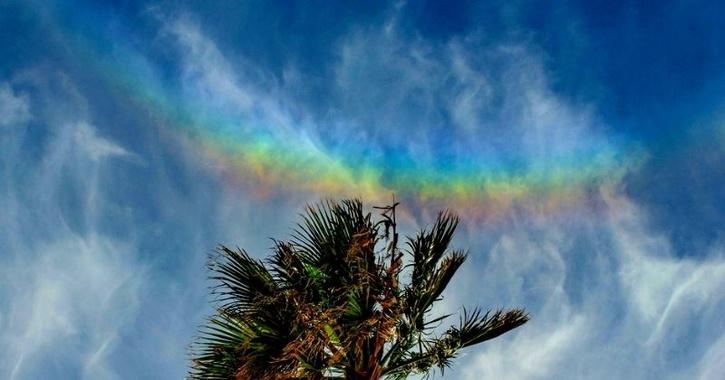
Mention rainbows, and the image that comes to mind is that of a beautiful translucent arc of bright colors bending towards the horizon. But in a recent image captured by Italian astrophotographer Marcella Giulia Pace and shared by NASA on March 11, 2022, the rainbow is turned around — making it appear like it is smiling! Magical as it sounds, the reason for the stunning phenomenon, called a circumzenithal arc, is rooted in science.
How do rainbows form?
As you may already know, white light is made up of seven colors, namely violet, indigo, blue, green, yellow, orange, and red. When a beam of white light in the air encounters a denser medium, like glass or water, it starts to move slower, causing it to change direction or refract. Since the components have different wavelengths, they refract, or bend, at disparate speeds. This causes the white light to exit the medium in its component colors.
Rainbows form when the sun's white light comes in contact with raindrops and refracts into the gorgeous bright color bands we are accustomed to seeing. Red has the longest wavelength and bends the least. Hence, it always appears at the rainbow's outer ring. Violet, which boasts the shortest wavelength, curves the most, ending up as the innermost color. Rainbows form full circles but are only visible as semicircles from the ground because the horizon cuts off the other half.
What makes a rainbow "smile"?
Circumzenithal arcs, or inverted rainbows, occur when sunlight encounters the ice crystals inside wispy, high-altitude cirrus clouds. The upside-down rainbow is seen when the light beam enters through the six-sided ice crystal's flat top face and exits from one of its prism-like side surfaces.
Meteorologists say that while circumzenithal arcs are fairly common in high altitudes, they are hard to see due to low-hanging clouds. Smiling or otherwise, the translucent band of bright colors arching perfectly over the landscape brings happiness to people of all ages.
Resources: NASA.gov, BBC.com, Wikipedia.org, Earthsky.org
